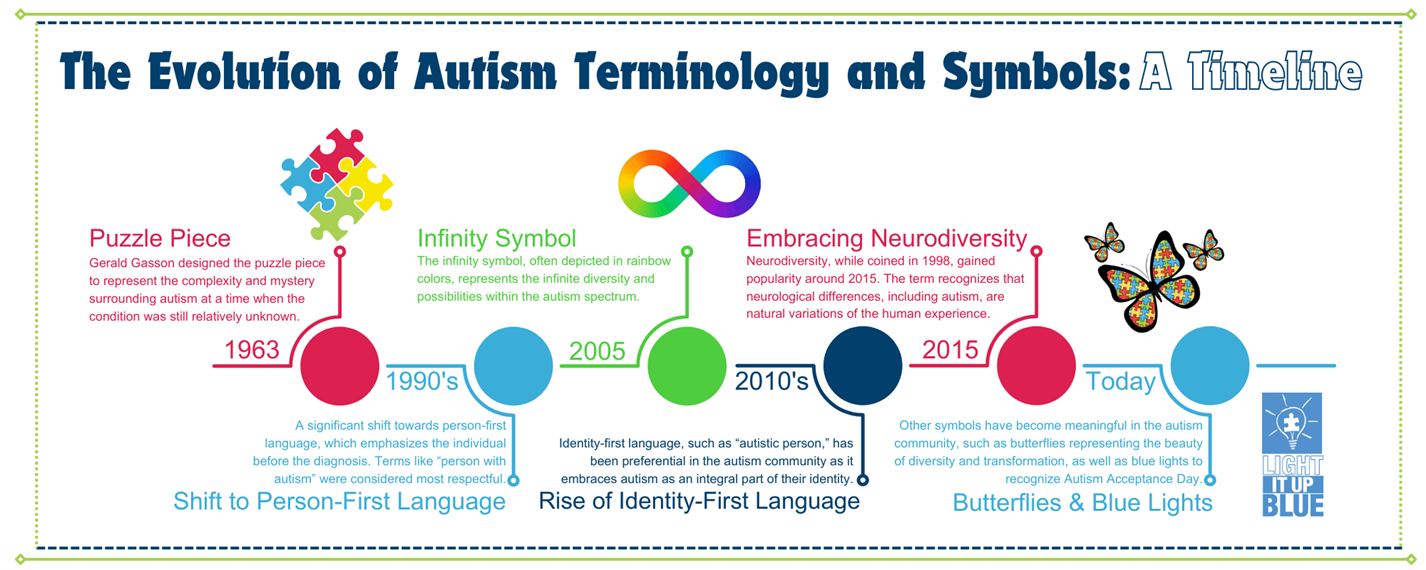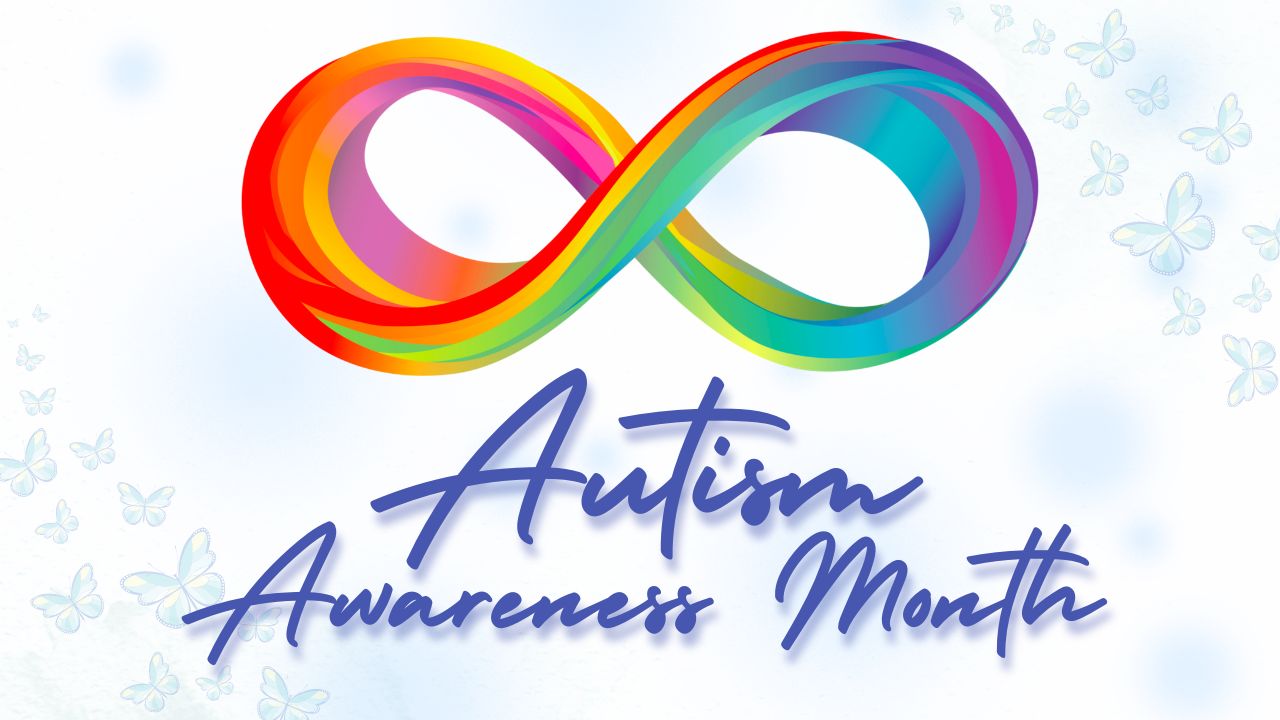World Autism Month
April 2025
April 2: 'Autism Awareness Day'
What is World Autism Month?
April is World Autism Month, a time dedicated to promoting understanding and acceptance of autism. April 2nd is specially recognized as World Autism Awareness Day. Throughout this month, we encourage discussions on the language and symbolism associated with autism and participation in events that promote wellness and inclusivity.
Autism Awareness Events in April
In honor of World Autism Month, join one or more of the following events to raise awareness and acceptance for Alaskans with Autism Spectrum Disorder, their families, and supporters.
- April 2: Light it up Blue'! Every April, the world comes together to recognize World Autism Month, and on April 2nd—Autism Awareness Day—we invite you to 'Light It Up Blue' to show your support for the autism community! Light It Up Blue is a global initiative that encourages people, businesses, and landmarks to shine blue lights and wear blue in honor of people with autism. By participating, you will help spark conversations, raise awareness, and promote acceptance for autism.
- 💡 Wear Blue – Show your support by dressing in blue and encouraging friends and family to do the same.
- 💡 Light Up Your Space – Change your home or business lights to blue or display blue decorations.
- 💡 Spread Awareness – Share autism facts, stories, and resources on social media using #LightItUpBlue and #AutismAcceptance.
- 💡 Support Autism-Friendly Organizations – Donate, volunteer, or get involved with initiatives that empower people and families with autism.
- April 4: Join us at the Kenai Community Center for a FREE training on Understanding Autism, Neurodiversity, and Challenging Behaviors.
- April 26: The Alaska Autism Resource Center (AARC) is hosting an in-person Walk in Anchorage to raise awareness and acceptance for Autism. The event will feature family-friendly activities, and they will be giving away door prizes donated by the community. Click here for more details and to sign up.
- April 1-30: In an effort to get even more Alaskans involved in World Autism Month, the AARC and Special Education Service Agency (SESA) are also hosting a virtual Walk-a-Thon for the month of April. Click here for more details and to sign up.
This event is free to join and allows you to show your support by walking, rolling, or moving how you choose! You can also order your Walk T-Shirt and are automatically entered to win our Walk-a-thon prize give-aways.
The History of Autism Iconography
Language and the symbols we use have tremendous power in shaping how we view our world and ourselves. Words and symbols can have different meanings for different people, and they can evolve over time. The same symbol may have different meanings for different people. This is also true when it comes to autism and the evolution of how we speak about and represent it. Throughout history, autism iconography has evolved, reflecting a shift toward more respectful, person-centered language and a continued effort to destigmatize autism. The first symbol widely recognized as representing autism was the puzzle piece, designed in the National Autistic Society (NAS) in 1963 to represent the complexity of the condition. Notably, this symbol was created by a non-autistic individual, NAS board member Gerald Gason.
In 1999, The Autism Society of America introduced the puzzle piece ribbon and shifted language toward person-centered language, using terms like "person with autism." The puzzle pattern was brightly colored to signal hope, and the interconnected pieces reflected the diversity of people and families with autism. This symbol came into widespread use when the organization Autism Speaks used them in large nationwide awareness campaigns in the early 2000s. Some people in the autistic community have negative associations with the puzzle piece symbol due to its association with words and phrases like 'puzzling,' 'mysterious,' and 'missing a piece'. Because of this, the iconology evolved again into a rainbow-colored infinity symbol to signify the infinite diversity and possibilities within the autism spectrum.
Beyond the puzzle piece and infinity symbol, other symbols have also been introduced to represent autism, including the butterfly, symbolizing transformation and the beauty of diversity, and the color blue to represent calmness and the need for community-wide acceptance of autism. The "Light It Up Blue" campaign uses the color blue to promote autism awareness and encourage greater understanding and support.

Image credit: Autism Learning Partners – Evolution of Autism Terminology and Symbols (Source).
Since the 2010s, there has been a growing movement toward identity-first language, such as referring to someone as an “autistic person” rather than a “person with autism.” Many in the autism community prefer this terminology because it acknowledges autism as an integral part of their identity rather than something separate. This shift reflects a broader acceptance and celebration of neurodiversity, recognizing autism as a natural and fundamental aspect of who someone is.
The concept of neurodiversity has gained significant recognition in recent years. This perspective acknowledges that neurological differences, including autism, are natural variations of the human experience. Rather than viewing these differences as deficits, neurodiversity promotes the idea that they should be respected and valued. The adoption of neurodiversity-friendly language within autism advocacy reflects a commitment to inclusivity and respect for all people.
The Impact of Language and Symbols
Language and symbols play a powerful role in shaping public perceptions and attitudes. The evolution of terminology and iconography in the autism community is more than just a linguistic shift—it represents a cultural movement toward acceptance, respect, and empowerment. When we use respectful, person-centered language, we recognize and value autistic individuals for who they are. Throughout April, we encourage everyone to learn, reflect, and celebrate the uniqueness of every individual. Increasing understanding and inclusivity will make the world a more supportive and accepting place for everyone.
Source: Autism Learning Partners. Symbols for Autism.



